A page from the "Causes of Color" exhibit...
What color do you get when you mix blue and yellow?

Primary colors and mixing of colors
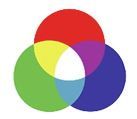
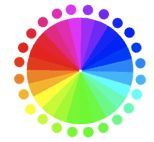
If you mix red, green, and blue light, you get white light. Red, green, and blue (RGB) are referred to as the primary colors of light. Mixing the colors generates new colors, as shown on the color wheel or circle on the right. This is additive color. As more colors are added, the result becomes lighter, heading towards white. RGB is used to generate color on a computer screen, a TV, and any colored electronic display device.
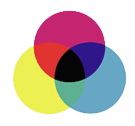
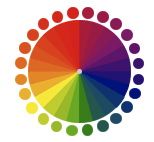
When you mix colors using paint, or through the printing process, you are using the subtractive color method. The primary colors of light are red, green, and blue. If you subtract these from white you get cyan, magenta, and yellow. Mixing the colors generates new colors as shown on the color wheel, or the circle on the right. Mixing these three primary colors generates black. As you mix colors, they tend to get darker, ending up as black. The CMYK color system (cyan, magenta, yellow, and black) is the color system used for printing.
Experiment with this RGB color mixer to get a feel for the effect of mixing the three different additive primary colors. The test box beside each slider shows the relative proportions of red, blue and green on a scale from 1 to 255. The sliders themselves show the appearance of the individual colors for your selected color. Notice how the resulting color compares with pigment-based mixing the effects are very different.
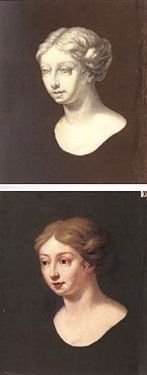
J.C. Le Blon discovered the primary nature of red, yellow, and blue in pigment mixes. The above pictures (from around 1720) show the second and final plates in his four-stage printing method (using red, yellow, blue, and black).








